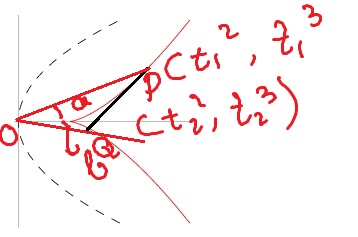If the tangent at point P of the curve, y^2=x^3 intersects the curve again at point Q and the straight lines OP,OQ make angles a,b withe x axis where O is origin, then tan(a)/tan(b) has a value-
(1.) -1 (2). -2 (3). 2 (4). 2^(.5)
If the tangent at point P of the curve, y^2=x^3 intersects the curve again at point Q and the straight lines OP,OQ make angles a,b withe x axis where O is origin, then tan(a)/tan(b) has a value-
(1.) -1 (2). -2 (3). 2 (4). 2^(.5)











